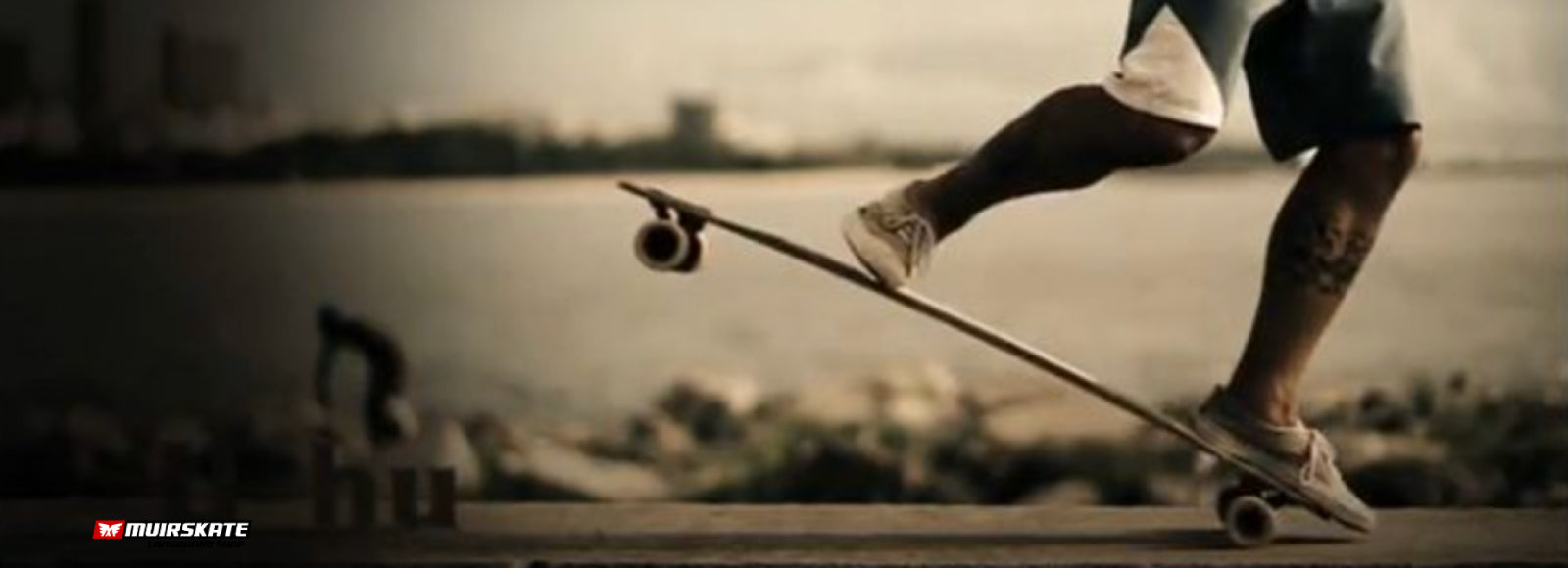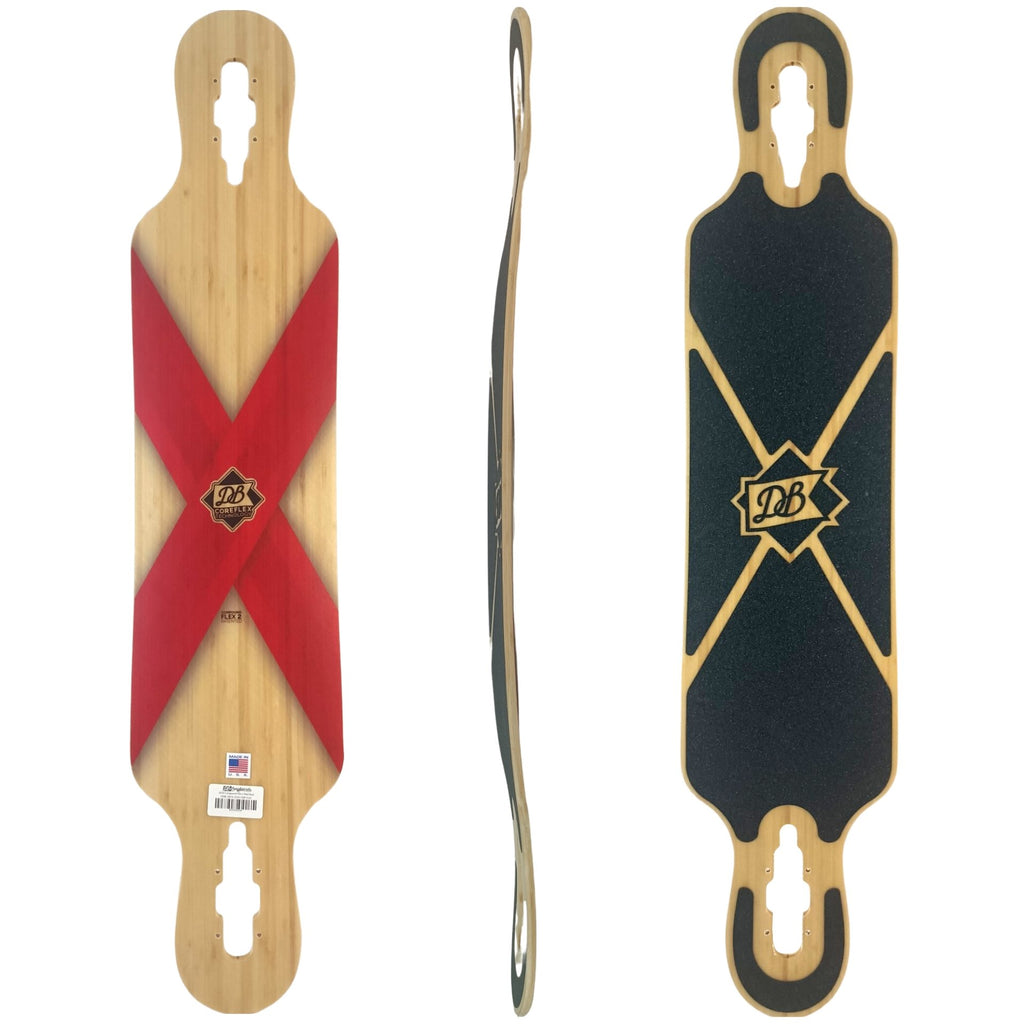
Longboard Buying Guide: Cruising & Carving
Cruising & Carving
If you want to ride your longboard to class, to the mall, or to the burger joint with some friends, a cruising board is what you need. There are many options, so read below to see what's right for you.
Choosing Your Cruising Deck
If you're planning to use a longboard to get to class, to work, or to the shopping mall, odds are you're going to be weaving in and out of some foot traffic. In this case, you'll want a smaller longboard skateboard since it will make navigating through the crowds and sidewalks much easier. Take into consideration that most of this kind of cruising will happen on mostly flat ground.
If you're not too concerned with pedestrians, or you’ve got a feeling that you’re eventually going to try some hills, you should look to a longer board for increased stability and shred-ability. Yes, these still work for cruising! Along with the ability to cruise, you’re now given the ability to expand your horizons should you feel the urge!

Covered in this Section
the length from the deck’s nose to its tail (in inches)
the springy-ness of the deck
a raised tail that can be used for tricks and riding transitions
01. Choosing the Right Deck Length
Boards in the length range of 28”-46” will be a good choice for a cruising deck. You could go smaller, but if you’re just getting started, it’s safer to stay in this range till you’re comfortable. Finding an appropriate-sized deck for cruising and carving is pretty easy - just read the descriptions for the different sizes below to get a feel for the length you will be comfortable with.
Choosing a shorter cruising deck
Longboards in the range of 28”-32” — although they're not actually “long”boards — are a great for young riders and smaller riders. Taller riders can also make good use of these smaller boards as long as they are confident in their riding ability.
Click on a product to see more details.
Choosing a mid-sized cruising deck
If you’re not sure where to start, longboards in the range of 32”-42” are the perfect choice to get moving! With a length in between “small” and “long”, these boards are intended to be “just right” for all riding types. Most cruising longboards you’ll see on the street will be in this range.
Click on a product to see more details.
Choosing a longer cruising deck
These boards are great for longer, relaxed rides on the sidewalk or practicing your boardwalking skills when the surf is flat. If you don’t mind carrying a hefty longboard around, feel free to get a longer board, but don’t say we didn’t warn you... The larger ones can get pretty heavy!
Click on a product to see more details.
Let’s dance Ballar is back! The changed shape, increased kick angle, 360 ° sidewall along the ...
02. Choosing Between a Flexy or Stiff Deck
Flex is certainly something to consider for your cruising longboard deck. Having a board that flexes can be a great help on those long rides. The flex on the board will absorb some of the rough terrain you may encounter as well as allow you to ride a bit lower to the ground than non-flexible counterparts. This type of shock absorption will generally help to relieve some of the stress on your ankles and knees. Riding lower to the ground adjusts your center of gravity making it easier to balance as well as push. Keep in mind: Some people love flexy boards, and others prefer the increased sense of stability that comes with a stiffer deck. This choice will ultimately be up to your personal preference, but as is the case with most of the riders we’ve encountered: flex is fun.
Choosing a deck with a small amount of flex
Many longboards seems to have a bit of flex to them after you ride them for a long time, but some are more special than others. Longboarding companies offer a longboard with a small amount of flex designed to give the rider some extra leverage through turns, as well as some shock dampening effects for riding on rough surfaces.
Click on a product to see more details.
PANTHEON DESCRIPTION:
The Eternal Ember is a new remake of one of Pantheon’s most p...
Choosing a deck with different flex levels
Choosing the right flexiness for your body weight is made simple by the many companies offer different flex choices on certain deck models. The proper flex choice for your weight will give you a bit of a dampening system as well as allow you to ride a little closer to the ground than other non-flexy boards.
Click on a product to see more details.
NO LIFT TICKET REQUIRED.
The Vanguard longboard brings lightweight snowboard-inspired co...
Choosing a stiff longboard deck
Some riders prefer to have a “direct” response from their lean and sway (rather than the “softer” feel found with flexible boards), and that is OK with us! Stiff longboards are easy to come by since they are quite common in the downhill longboarding scene as well as being what many people might consider to be a “real longboard”.
Click on a product to see more details.
FromColeTrotta: "Looking back on the last 8 years of skating, I wanted to design this board sp...
03. Choosing a Kicktail or No Kicktail
The twin-tip shape of the Loaded Dervish Longboard Skateboard Deck and the near symmetrical shape of the Honey AMP 6 Longboard Skateboard Deck keep these boards easy to ride for everyone as well as make the board more aesthetically pleasing. That doesn’t mean, however, that there’s someone out there who won’t use a kicktail when given the opportunity!
Choosing a deck with a kicktail
A kicktail can be very convenient when you need to make quick turns, do tricks, and pop up and down curbs. Beginners can ride boards with kicktails or without, since it ends up just being a matter of preference. If you feel that you’d put a kicktail to proper use (as is mentioned above) go for it!
Click on a product to see more details.
Developed by team riders Matt Noseworthy and Clayton Arthurs, the Freedive is the single kick ...
In 2017 we introduced the first Ian Freire pro model. For 2021 we have completely revised the ...
Choosing a deck with no kicktail
If you’re not the type to make aggressive, kicktail assisted maneuvers, there are still plenty of options to fit your personal preferences. Most boards without kicktails are able to maximize the effective wheelbase (distance from one axle to the other), thereby making them a bit more stable for beginners.
Click on a product to see more details.












